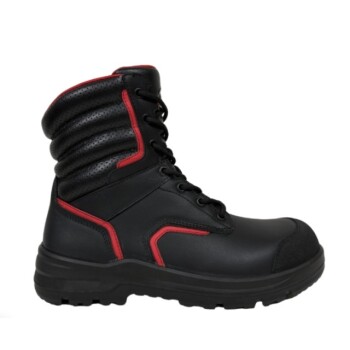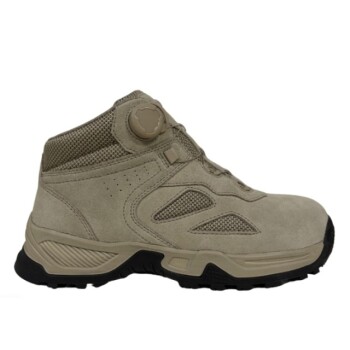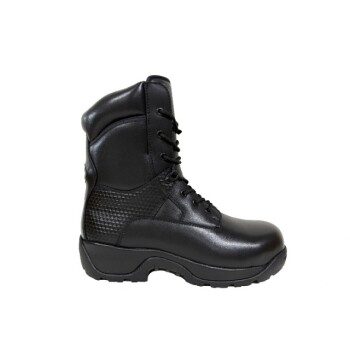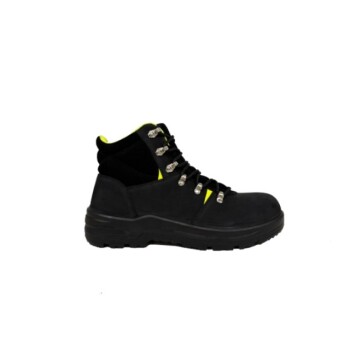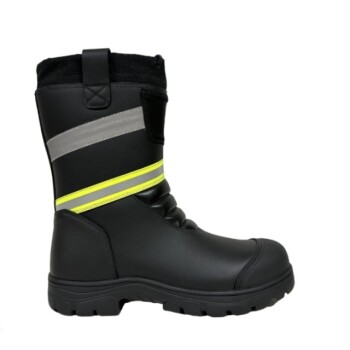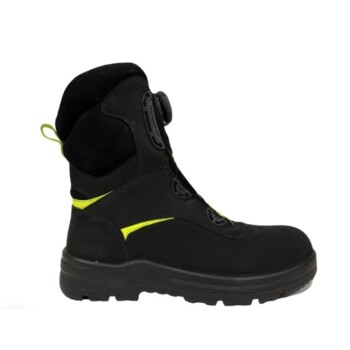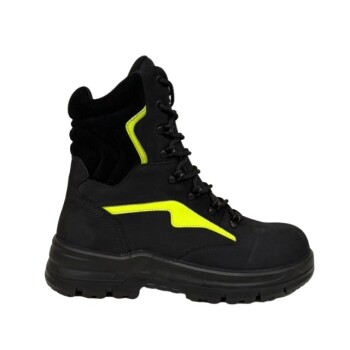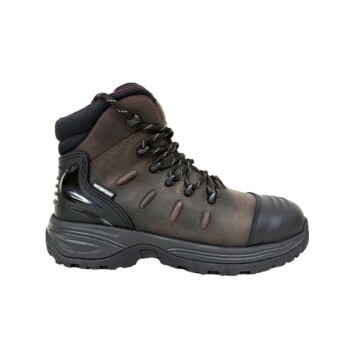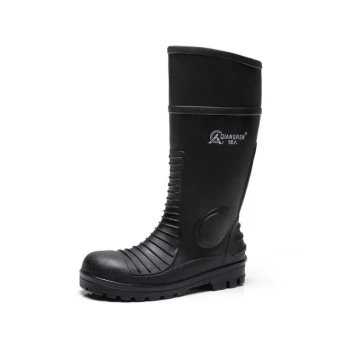The most effective way to break in new work boots is through a gradual and patient process of wearing them for short, increasing periods of time. This method allows the boot's materials, particularly the leather, to slowly mold to the specific shape of your feet, preventing painful blisters and ensuring a comfortable fit without damaging the boot itself.
The core principle of breaking in work boots is not about forcing them into submission with risky shortcuts, but about patiently guiding the materials to adapt to your feet. A gradual wear-in process is the only method that guarantees both your comfort and the longevity of your investment.
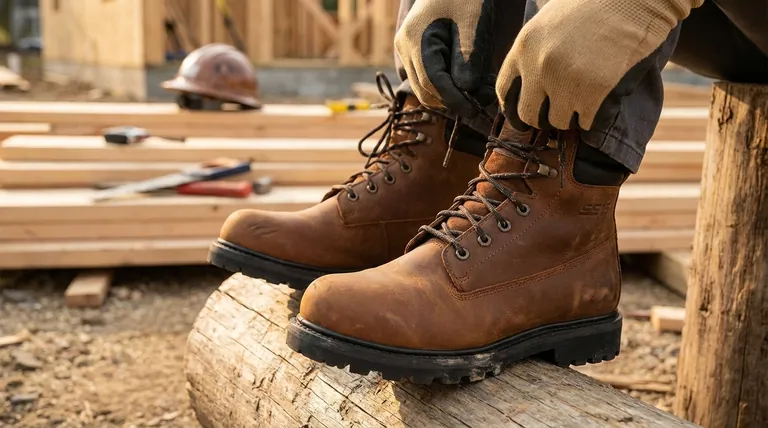
The Principle of Gradual Adaptation
New work boots, especially high-quality leather ones, are intentionally rigid to provide maximum support and protection. The break-in period is a necessary process of introducing flexibility to these stiff materials.
Why Patience is the Critical Factor
The leather, footbed, and structural components of a boot need time to flex and soften. Rushing this process with aggressive techniques often leads to discomfort and can permanently damage the boot's integrity.
Matching Socks to the Task
Always wear the same type of socks you plan to use for work during the break-in period. This ensures the boots mold to the precise dimensions of your foot as it will be in a real-world scenario.
The Safe and Effective Break-In Process
Follow this structured, three-phase approach to ensure your boots become a comfortable and reliable tool for your feet.
Phase 1: Initial Indoor Wear
Begin by wearing your new boots around the house for just a few hours at a time. This allows your feet to get accustomed to the boots in a low-impact, controlled environment where you can easily take them off if significant discomfort arises.
Phase 2: Short Outdoor Excursions
Once the boots feel reasonably comfortable indoors, start wearing them for short walks outside. This introduces more dynamic foot movements and begins to simulate the light stress of a workday, further encouraging the materials to conform.
Phase 3: The Workday Transition
Start wearing your new boots to your job, but be sure to bring your old, trusted pair as a backup. Plan to wear the new boots for the first half of the day, then switch if you begin to feel hot spots or pinching. Gradually increase the duration over several days until you can comfortably last a full shift.
Common Pitfalls: Methods to Strictly Avoid
Several popular "hacks" promise a faster break-in period, but they almost always risk damaging your boots or your feet. You should avoid these methods entirely.
The Water-Soaking Myth
Filling your boots with water or wearing soaking-wet socks is a common but damaging piece of advice. This practice can oversaturate and weaken the leather, promote the growth of mold and bacteria, and cause the materials to degrade prematurely.
The Dangers of Direct Heat
Using a hair dryer or other heat source to soften boots is another harmful shortcut. Excessive heat can dry out the natural oils in the leather, causing it to become brittle and crack over time.
Chemical Sprays and Solvents
Spraying your boots with mixtures of alcohol and water can strip the leather's finish and weaken its fibers. These chemicals can compromise the structural integrity and weather resistance of your boots.
Making the Right Choice for Your Goal
Ultimately, the goal is to create a custom fit that provides support and comfort for thousands of hours of work.
- If your primary focus is avoiding blisters and foot pain: Adhere strictly to the gradual wear-in process without any shortcuts. This is the only guaranteed way to prevent the friction that causes blisters.
- If your primary focus is preserving the life of your boots: Stay away from any method that involves excessive water, direct heat, or harsh chemicals, as these will invariably shorten the functional lifespan of your footwear.
Properly breaking in your boots is the first and most critical step in ensuring they protect and support you for years to come.
Summary Table:
| Break-In Phase | Duration/Activity | Key Goal |
|---|---|---|
| Phase 1: Indoor Wear | 2-3 hours at home | Initial adaptation in a safe, controlled environment. |
| Phase 2: Short Walks | 30-60 minute walks | Introduce dynamic movement and light stress. |
| Phase 3: Work Transition | Half-days, then full shifts | Gradual adaptation to the full demands of your job. |
| Methods to AVOID | Water soaking, direct heat, chemicals | Prevents permanent damage to boot materials and structure. |
Need Durable, Comfortable Work Boots That Are Easier to Break In?
As a large-scale manufacturer, 3515 produces a comprehensive range of high-quality work boots designed for superior comfort and durability right out of the box. Our expertise ensures the materials and construction are optimized for a smoother break-in process, saving you time and discomfort.
We provide:
- Bulk Pricing for distributors and large-volume clients.
- Custom Branding opportunities for brand owners.
- A Full Range of safety footwear built to last.
Stop struggling with stiff new boots. Let's discuss how our manufacturing capabilities can meet your specific needs.
Contact 3515 today for a quote and experience the difference quality manufacturing makes.
Visual Guide
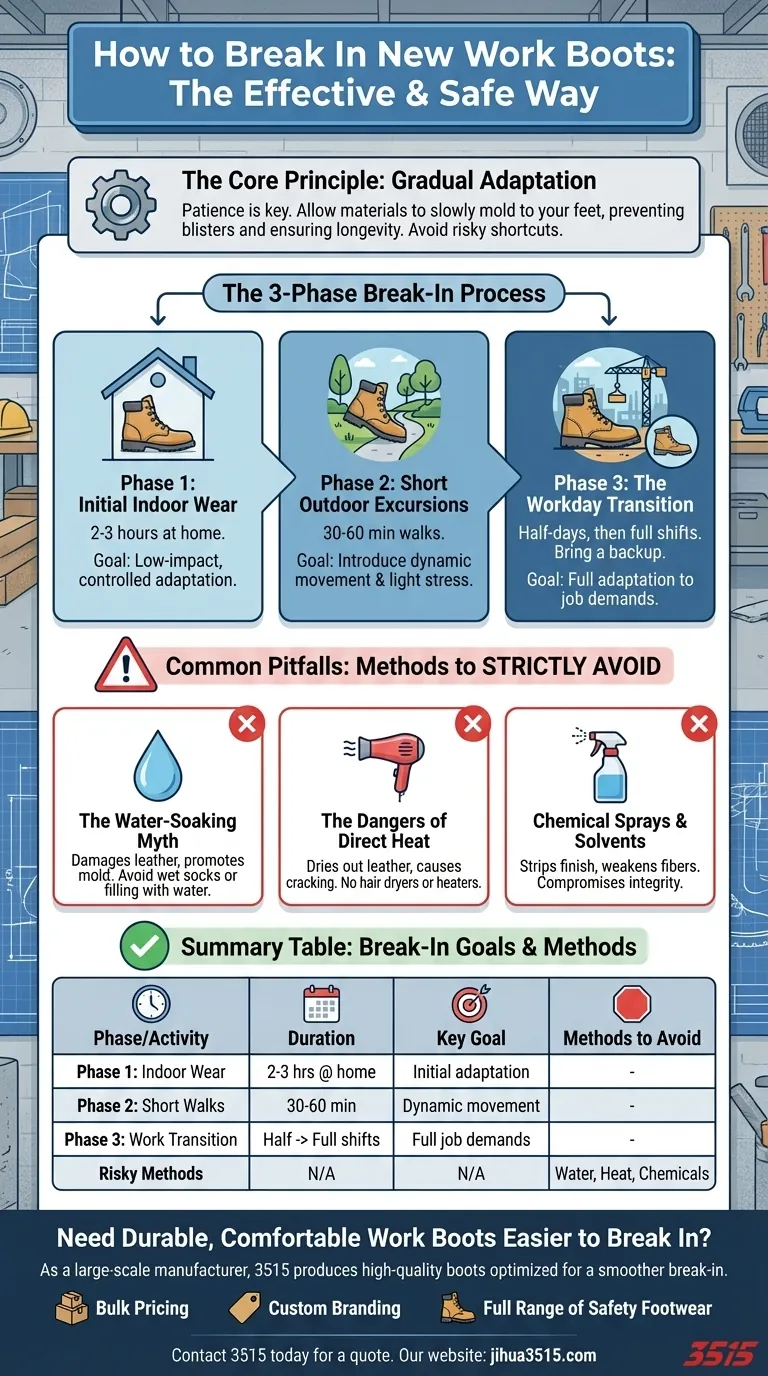
Related Products
- Durable Leather Work Boots for Wholesale & Custom Manufacturing
- Durable Leather Work Boots for Wholesale & Custom OEM Manufacturing
- Wholesale Durable Safety Boots Manufacturer Customizable Steel Toe Work Boots
- Customizable Anti-Smash Safety Boots for Wholesale & Private Label Manufacturing
- Premium Wholesale Waterproof Safety Boots High Performance Protection for Industrial Markets
People Also Ask
- How should one choose between work boots and dress boots? Find the Right Boot for Your Needs
- In what environments can work boots be worn? From Heavy Industry to Casual Style
- What features enhance fit, comfort, and support in work boots? Essential Guide for Distributors & Bulk Buyers
- What are the cultural perspectives on wearing shoes in the house? A Guide to Home Etiquette & Hygiene
- What cultural and environmental considerations are tied to wearing shoes indoors? Balance Hygiene, Tradition, and Foot Health




